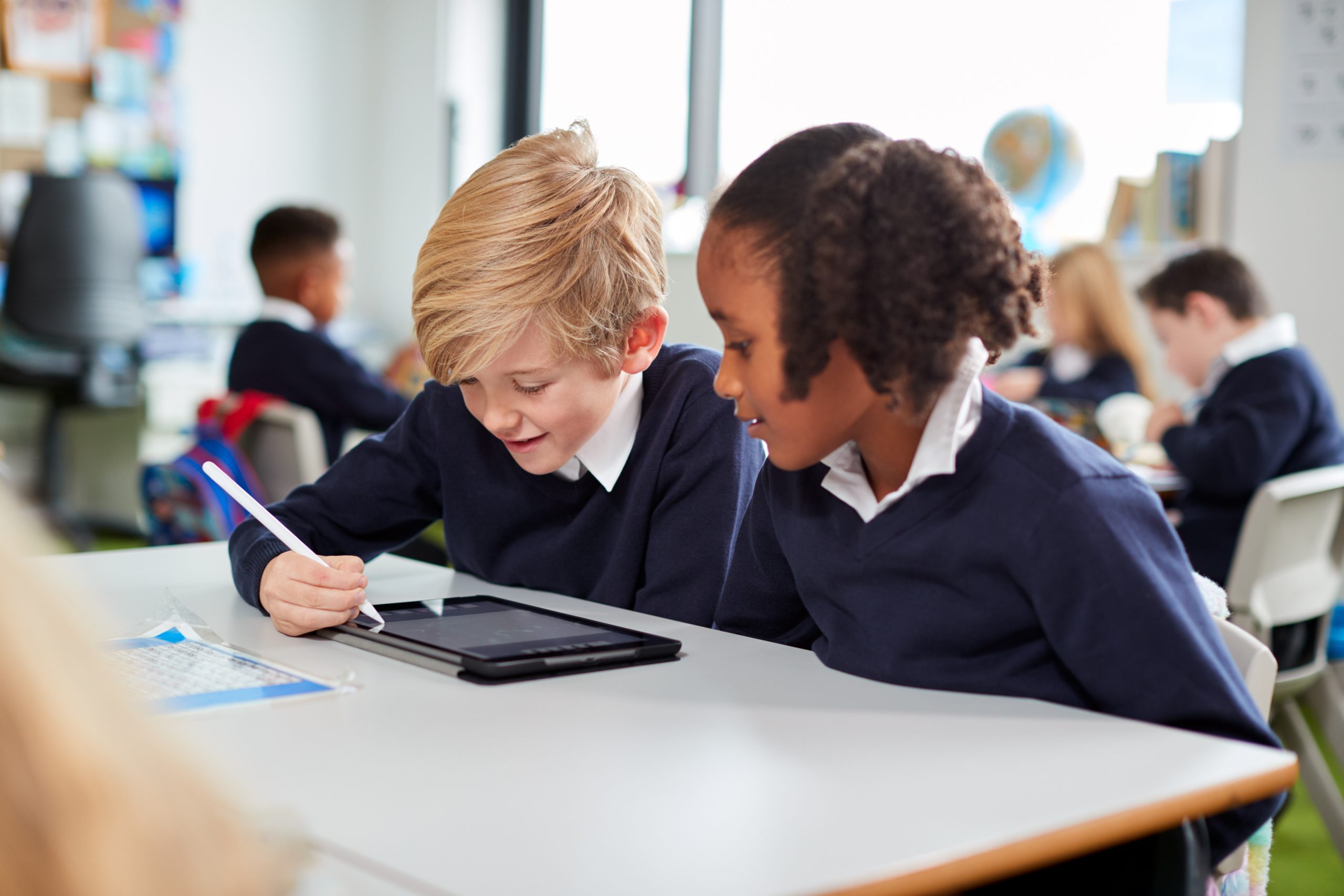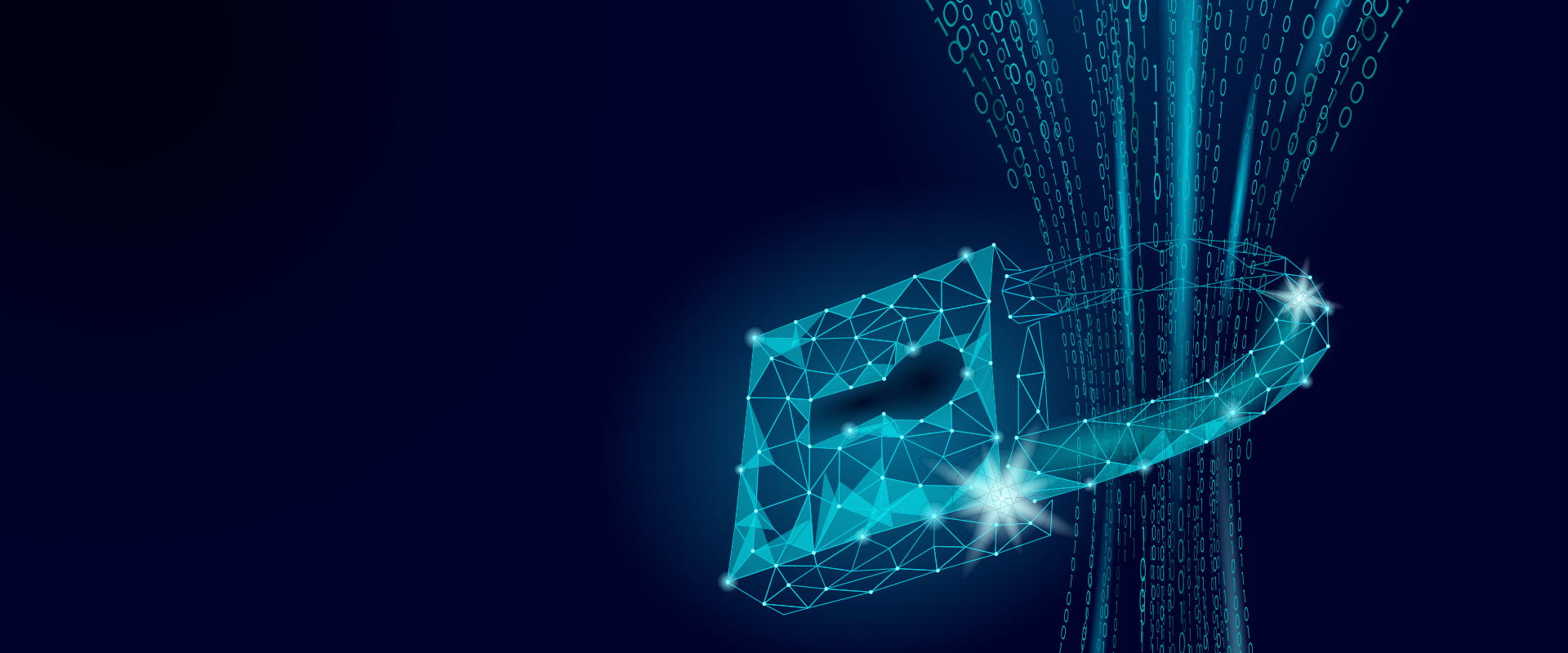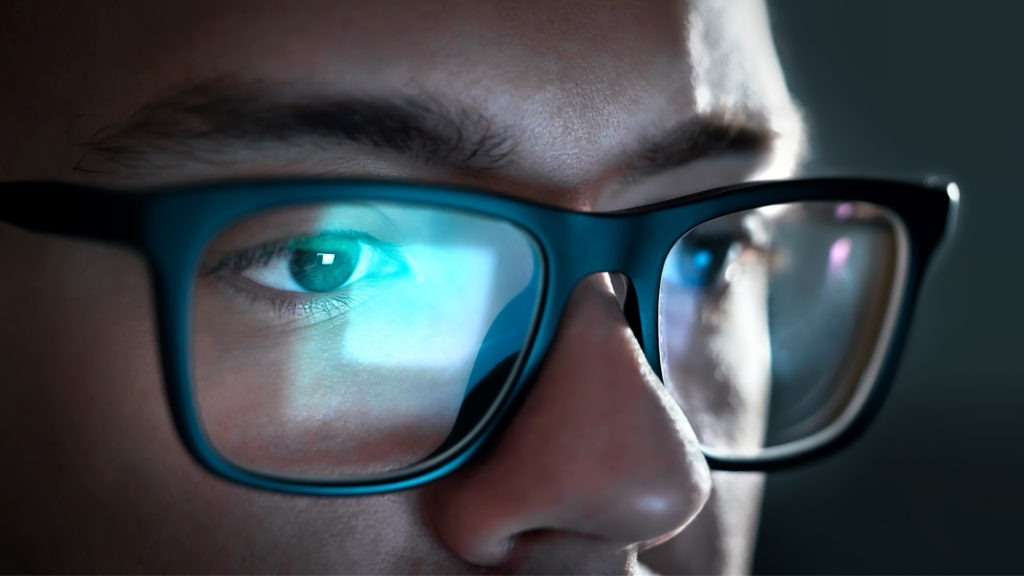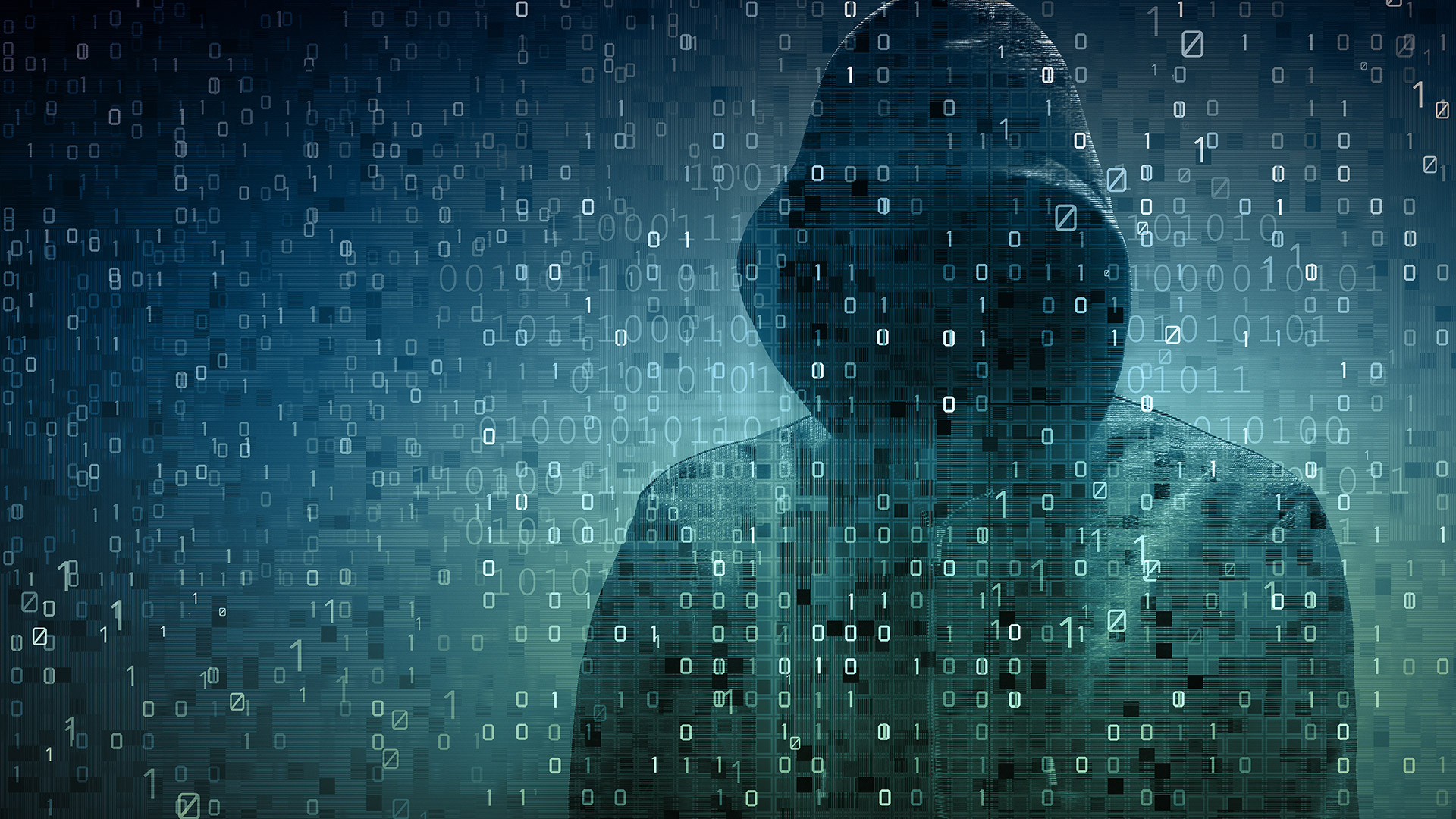ISNZ October
Taking The Pain Out of BYOD Season
Choosing a trusted BYOD partner can elevate your student device experience from a nightmare to a dream. In this short article, we share tips on what to look for when it comes to running an effective BYOD programme within your school community.
Taking The Pain Out of BYOD Season
Every new school year comes with barrages of queries and questions from your community. From enrolment details and timetables to uniform requirements and device setups, it’s a busy time for both families and staff. One way that schools can ease this transition and support learning from day one is through a well-structured BYOD (Bring Your Own Device) Programme. BYOD programmes empower students to use familiar technology for learning and streamline device management for schools.
Technology has bloomed into a critical aspect of our lives, and its influence on education is both transformative and far-reaching. It has a significant impact on the way students learn, access information and engage with their teachers and peers. It’s both important and necessary to ensure every ākonga has the tools they need to thrive in a modern, digital classroom and the teacher is supported to create and sustain that environment.
BYOD Programmes are highly effective when implemented correctly and can be scaled to meet the needs of any sized school. Some schools choose to limit and manage the number
of unique devices available, creating familiarity and confidence for teachers. Others offer carefully designed bundles, including accessories, ensuring students are fully equipped while reducing the decision-making stress whānau often face when navigating with multiple device options. The programme’s success is often determined by the collaboration with a knowledgeable provider.
What to look for in a specialist BYOD Provider:
- Expertise and Experience: Your provider should understand the unique environment or challenges that schools experience.
- Scalability: As your programme grows, is your provider ready to grow with you?
- Streamlined Setups: Does the provider offer pre-enrolment of devices, configuration and management so your IT Teams, staff and school whānau can save precious time.
- Teacher Support: Training support or resources to help teachers feel confident with the devices selected.
- Device Enrolment and Management: Whether you choose Apple, Google or Microsoft devices, increasingly schools want a BYOD partner that can automatically enroll these into their management tools. An experienced BYOD partner can complete this at the time of purchase.
- Ongoing Management: Do they offer support, updates and maintenance, keeping your programme running smoothly.
By partnering with a specialist BYOD provider, you can ensure a seamless, scalable programme that fits your school’s unique needs. With the right approach, BYOD doesn’t just equip students with devices; it creates a connected, confident and future-ready learning environment.
Cyclone: A Proven Partner In BYOD
Cyclone’s BYOD programme offers a tailored approach to device management, starting with a custom-branded portal that reflects your school’s identity. With school-approved devices and curriculum-aligned bundles (including unique bundles by year level, division or pod), it’s easy to ensure students have the right tools from day one, without the guesswork.
Behind the scenes, Cyclone manages setup, maintenance and parent support, so your team can stay focused on teaching and learning. Devices can be pre-enrolled into your management systems and reporting tools help track readiness across your school community.
With transparent pricing, flexible payment options and fast local repairs, Cyclone’s BYOD solution is built to support schools and families alike. It’s a secure, ad-free platform that gives you full control, making BYOD simple, reliable and effective to empower ākonga anywhere, anytime.

Get In Touch
If you’d like to get started with a custom BYOD portal for your school, reach out to your Cyclone Account Manager or talk directly to our BYOD Team.
Rethinking ICT Management in Schools
Schools
Rethinking ICT Management in Schools
The complexity and breadth of technology usage in schools has expanded almost exponentially in the last few years, requiring leadership to critically evaluate the smartest and most cost effective way to manage a school’s growing investment in technology.
Historically, an “IT Generalist” could reliably cover most areas of technology in a school, however the combination of increasingly sophisticated cybersecurity threats along with new specialized areas of ICT such as cloud services and AI means even the most committed individual struggles to keep up.
As a result, more schools are seeking to partner with ICT services companies that have a focus on education customers, such as Cyclone. These partnerships allow schools to access a wider range of expertise, with individuals who are typically certified in specialist areas and who can provide comprehensive support to ensure projects, upgrades and emergency ICT responses can be supported in a timely manner.
School leaders should be constantly evaluating how they are performing in the following six core ICT areas. Consider the questions in each section as a self-check warrant of fitness for your organisation.
Security
- Have you had an external audit of your current security posture in the last 12-18 months?
- Are you confident that vendor firmware updates are consistently and reliably applied to critical security appliances such as your firewalls and core network switches?
- Have you provided training to your staff to help them identify and report cybersecurity threats from increasingly sophisticated phishing attacks?
Identity
- Do you have a cloud-based identity provider that allows you to securely access services hosted both on your school network and in the cloud, whether you’re on campus or remote?
- Can your staff and students easily Single Sign On into all school-approved resources (devices, cloud services, SMS, printing etc)?
- Is Multi-Factor-Authentication (MFA) required and enforced when accessing content from a non-secure location?
Endpoints
- Are your school owned laptops/tablets/phones currently managed by an MDM?
- Are vendor released security and operating system patches automatically applied to protect devices and users?
- Are your devices running a managed and updated security product to protect against viruses, malware and other threats?
Network
- Have you had an external audit of your current network in the last 12-18 months?
- Is your wireless network reliable and coping with increased network traffic and number of devices connecting to it?
- Have you budgeted for upgrades to future-proof your network as usage increases, and before current equipment goes end-of-life or end-of-support?
Infrastructure & Cloud
- Have you had an external audit of your current on-premise infrastructure in the last 12-18 months?
- Have you explored which services you currently run on-premise that could be migrated to the cloud or the vendor’s Software as a Service offerings (e.g. Student Management Systems, Library Management Systems, Learning Management Systems, Print Services etc)
- Are you currently backing up core data stored on-premises and in the cloud (e.g. Microsoft 365 and Google Workspace) and regularly performing test restorations to build confidence in your disaster recovery capabilities?
Artificial Intelligence
- Do you have an organisational AI policy that has been communicated to your staff and students with clear expectations around usage and approved AI platforms?
- Have you performed an audit of security permissions for cloud resources to prevent accidental data leaks / exposure before purchasing AI tools like Microsoft Copilot for M365 and Google Gemini?
- Have you provided training to AI Champions inside your organisation to help maximise the value of AI to your users?
If you have identified there are gaps or concerns to the above questions, then reach out to Cyclone for assistance on 0800 686 686 or hello@cyclone.co.nz.
AI Security
Schools
Setting a Clear Course in the Turbulent Seas of AI
In the digital age, the advent of artificial intelligence (AI) has presented both opportunities and challenges, especially for educational institutions. Schools in Aotearoa are renowned for their commitment to providing exceptional education, find themselves navigating the everchanging landscape of AI integration. As an AI Specialist at Cyclone, I want to share crucial advice on how these schools can set a clear course in this evolving landscape.
The Imperative of Data Protection and Privacy
One of the foremost considerations for independent schools venturing into AI is the protection of data and privacy. Generative AI tools offer immense potential to enhance learning, but it is imperative to select tools that prioritise data security. Schools should lean towards using data-protected and private AI tools such as Google Gemini, Microsoft Copilot and Apple Intelligence. These platforms are designed with robust security features that safeguard sensitive student and staff information, and this protection comes with purchased Workspace or 365 licences.
Conversely, it is advisable to avoid using Open tools such as ChatGPT, Claude and Perplexity for educational purposes. While OpenAI has made significant strides in AI development, concerns about data privacy and security persist. Independent schools must be vigilant in selecting AI tools that comply with stringent data protection standards to maintain the trust of parents, students, and staff.

Developing a Comprehensive AI Strategy
The integration of AI into the educational framework should not be approached haphazardly. It requires a well-thought-out strategy that aligns with the school’s values and goals. A key component of this strategy is the development of policies that govern the use of AI tools. However, more crucial than a general policy is the establishment of an Acceptable Use Policy (AUP) specifically for AI.
An Acceptable Use Policy serves as a guiding document that outlines the boundaries for AI usage by teachers and students. For teachers, the AUP should provide clear guidelines on what generative AI should and should not be used for. This clarity helps prevent misuse and ensures that AI is employed to enhance teaching rather than replace fundamental educational practices.
For instance, teachers might be encouraged to use AI for unit planning and assessment creation but cautioned against using AI for grading student work or drafting emails to parents without proper oversight. By setting these boundaries, schools can ensure that AI tools are used ethically and effectively, contributing positively to the educational environment.
Creating an AUP requires a collaborative approach involving educators, administrators, and IT professionals. Schools should also consult or utilise Boards of Governors during the process. It should be a living document, regularly reviewed and updated to reflect emerging trends and technologies. Training sessions for teachers on the ethical and practical aspects of AI usage are essential to ensure adherence to the policy.
Moreover, involving students in the development of the AUP can foster a sense of ownership and responsibility. For example, secondary school students above the age of thirteen could participate in workshops where they discuss the ethical use of AI and propose guidelines for its implementation in their classrooms. By educating students about the ethical use of AI, schools can cultivate a generation of digitally literate individuals who understand the implications of AI technology.
Embracing the Benefits While Mitigating Risks
While the cautious adoption of AI is essential, it is equally important to embrace the benefits that AI can bring to the educational landscape. Currently, staff and students are already utilising these generative AI tools to enhance their learning experiences. For instance, AI can personalise learning experiences by providing customised lesson plans and resources tailored to individual student needs, making education more accessible for students with diverse learning profiles. They can also provide real-time feedback, enabling teachers to tailor their instruction to individual student progress.
However, the focus should always be on augmenting human capabilities rather than replacing them. Teachers play a pivotal role in nurturing critical thinking, creativity, and emotional intelligence—qualities that AI cannot easily replicate currently. Therefore, AI should be seen as a tool to support teachers in their mission to provide holistic education.
In conclusion, the integration of AI in independent schools in Aotearoa requires a balanced approach that prioritises data protection, ethical usage, and strategic planning. By opting for secure AI tools like Google Gemini, Microsoft Copilot and Apple Intelligence, developing comprehensive Acceptable Use Policies, schools can harness the potential of AI while safeguarding the interests of their communities. As we navigate these turbulent seas, let us set a course that embraces innovation while upholding the values that define exceptional education.
Written with the assistance of Microsoft Copilot 365.

written by our very own
Danny Bedingfield
Danny is a Learning, Development, and AI Specialist with over a decade of experience in integrating technologies into education. He excels in creating AI strategies that enhance learning and promote ethical use. Danny has helped schools develop Acceptable Use Policies and provided training for teachers and students on AI. His collaborative method ensures effective use of AI tools to support education.
If you are interested in following up on these insights or would like Danny to present at your school, please reach out to him at Danny.Bedingfield@Cyclone.co.nz . Embrace the future of education with the guidance of an expert who is committed to fostering digitally literate and ethically informed learners.
Minecraft in the Classroom
The transformational power of Minecraft in the classroom
The excerpt will automatically add to here. Do not edit this block.
How using Minecraft in the classroom opened my eyes to the transformation of education technology
Every person in the world understands the ah-ha moment, but teachers know it better than most. It is that feeling when, suddenly, things just click. The unknown becomes known. The opaque becomes clear. It is a wonderful feeling and as teachers we are privileged to see it happen often. What is particularly powerful, is when this ah-ha moment comes as a result of trying something new. Be it a new pedagogical approach, a new piece of technology or a new behaviour management strategy, when something works for a student, and you can see their face light up as they begin to perceive things in a whole new way then we know we are doing our jobs and doing them well!
In the summer of 2018, one of my students had an ah-ha moment that changed they way I viewed the role of technology in education. The impact that this had on me was profound. Not only did this change my day-to-day teaching practice, but it led to a passion for digital technologies in the classroom that has ultimately changed the direction of my career.
Let me give you some background…
During a long and hot term four, I was teaching History and Social Studies at a large and diverse South Auckland School. Although we were on the tail end of the year and things really should have been winding down, I had a particularly energetic class of Year 9’s that I needed to keep occupied.
At the beginning of the term, a brand-new student (let’s call him Luka) was placed into my class. Despite the diversity of the school, I had never had any experience teaching a student such as Luka before. Luka was from Eastern Europe and spoke almost no English. Although he was an outgoing kid, Luka had experienced some tough things in his life and these experiences made connecting with him even more challenging. Managing Luka’s behaviour in class was difficult. The communication barrier between myself and the rest of the class left him frustrated and like anyone, this led to disengagement with tasks and distracting behaviours. Challenged constantly with reading, writing and speaking English all day, attempting to get Luka to do any sort of classwork was very difficult.
Since we had finished up most of our assessment for the year, I decided to try something new and fun to try and keep my students engaged for the remainder of the school year. The kids kept asking me to play games, and as I had completed a day of Minecraft Education Edition PLD earlier in the year, I figured I would give it a go with the class. I had barely played Minecraft and still wasn’t sure how it could be used to foster good learning, but I figured this was a low stakes opportunity to try it out.
I presented the students with a project surrounding landmarks. Students were to work individually or in groups to research a different landmark from around the world, produce a brief report about the significance of this landmark to different groups of people and finally recreate this landmark using Minecraft Education.
As I began to hand out instructions for this task to introduce the class to this project, I remember Luka didn’t even pick it up. The handout lay on his desk untouched, Luka gazing out the back windows of the class – until I said the word Minecraft. Although Luka probably didn’t understand most of my instructions, his demeanour changed completely.
Over the course of the project, Luka went from disengaged and frustrated to motivated and enthusiastic. Unwittingly on my part, Minecraft was a game that he had played as a kid in Europe and the familiarity with this tool meant he felt both confident and comfortable with what he was doing. Rather than being frustrated by the language barrier between us, Luka started trying to understand things with a greater sense of motivation. He began actively using apps to translate instructions and to communicate with me and his classmates.
It was not simply the fact that Luka was confident in using Minecraft, but it was also the nature of the task itself that changed his attitude towards his learning. Luka chose to do his project on the Church of Saint Sava, a landmark in Serbia that he connected with back in his homeland. Using Minecraft, Luka was able to communicate with myself and the rest of the class something about him, his family and his history in a way that transcended the use of written or oral language. Rather than tell us about this place that was significant to him, Luka was able to recreate it in a virtual world and provide others in the class the opportunity to explore it.
Luka’s Minecraft build was outstanding. Despite being challenged, he was able to communicate about the significance of his landmark to himself and to others. His project was a drastic improvement in both output and quality of the classwork that Luka had attempted for me previously.
This was my ah-ha moment. Digital technology such as Minecraft allows us to transform teaching and learning experiences for students. Not only did the use of this game make this project more engaging for this student, but it made it personal, collaborative and accessible. Like many teachers, when I used this piece of technology with my class I only really did so because I thought it would make my lessons more enjoyable – but in thinking this way, we limit our ability to understand how technology can be used to improve almost all aspects of a student’s learning experience. Technology transcends almost all physical barriers. Language, disability, distance, even personal interest – when used effectively, all these barriers can be levelled using digital tech.
If you are keen to learn more about how you can start using Minecraft: Education Edition or any other Microsoft tools that can make learning experiences more accessible for students.
Not if, but when. Ransomware on the rise.
Schools
Make your organisation cyber resilient.
The excerpt will automatically add to here. Do not edit this block.
Protecting your organisation starts with protecting your data.
Ransomware. It wasn’t that long ago that it was a thing that happened to other people, often the big corporates, the blue chips in America. But not us in little old New Zealand/Aotearoa. We would occasionally hear it mentioned on the news in passing, or on page 10 of the paper. Leap forward to 2021, the year of COVID-19, of lockdowns and the now ubiquitous phrase ‘you are on mute’. The number of attacks made public on local organisations has increased. The biggest single target being the Waikato DHB. They estimate it taking another 2 years before they are back to where they were.
And at the start of July international software company Kaseya had their remote management tools hijacked to deliver ransomware to unsuspecting victims. This new development is concerning, because the end users did not do anything wrong, nor did the support organisations.
So what can we learn from these high-profile attacks, and what steps can we take to reduce the risk you are next? The number one thing to do if you haven’t already is to turn on multi-factor authentication (MFA) for all system administrators at a minimum, and preferably all staff. If you have a software platform that doesn’t support MFA you need to be asking questions of the vendor. If you have the choice of methods, using an app on your phone is top of the list, followed by a third party rotating key token (banks often use these). The worst options are receiving an email or text message – neither of these two options are secure.
Ensure you are backing up your data. This includes Office365 and Google Workplace content. Not all backups are created equal though. Your backups should be going to an offsite location, retained for at least 60 days, and tested. It is no good making a copy of everything to a local hard drive if there is a fire! And no good backing things up if you cannot restore it. In the ideal world backup systems would be air-gapped from the source, and write permissions only allowed to the backup solution. These backups should be monitored and any anomalies investigated. Its common for attackers to quietly infect a system, then wait a month or more for all backups to also be infected before attacking. Look for larger than usual backup sizes, and odd looking content. Artificial Intelligence (AI) bots exist that can do this for you. For those with on-premise servers, ensure your DNS and Active Directory are included in the backups, and ideally locked away separately in a vault (software or physical) so you can quickly recover your infrastructure.
Review who has access to what. You shouldn’t have more than three super-admins/global admins in any system, and these should be protected with MFA. Also review who has remote access into your systems, either using a VPN or some other method. Separate out the different administrative roles so breaching one account will not open the floodgates.
Microsoft have a global threat activity website that shows cyber-threat activity for the last 30 days. Disturbingly education makes up of 60% of all recent encounters.
Cyberthreats, viruses, and malware – Microsoft Security Intelligence
Subscribe to our newsletter
Subscribe to Cyclone news to keep up to date with new technology, current trends and future thinking.
It’s ugly out there, people. Good security starts with you.
Schools
Avoid the hook.
The excerpt will automatically add to here. Do not edit this block.
Staying secure in the modern world
Halfway through the 2021 academic year, and we are still hearing of phishing attacks on schools at all levels throughout Aotearoa. There was a time were only the big global companies were targeted by these attacks. The recent attack on the Waikato DHB should be, and has been, a wake-up call for all organisations. One thing that strikes me when visiting schools is the lack of awareness posters up on the walls. Nothing in the staff room, nothing in the hallways, nothing in the learning spaces.
For me this is concerning. Most if not all schools have some form of a Digital Citizenship programme they run for students. Part of being a good digital citizen is knowing how to keep safe online. Being able to identify a phishing email, learning to not download an application from a random Internet site, or clicking on links in instant messages is central to this (ISTE standard 2B for students relates directly to this very point).
The risks that these types of attacks can introduce can be broadly categorised into one of two buckets; ransomware , where all your files are encrypted and you cannot access them without paying the hijackers, and theft where either your data is stolen to be sold on the dark web, or you are tricked into paying phoney invoices.
Ransomware attacks are growing. Imagine being at the end of a school year, your students have worked hard all year on assignments, and suddenly they are no longer available for final grading or revision for external exams.
Arguably worse than a ransomware attack is the theft of data. Schools hold a large amount of personally identifiable information (PII) about staff and students, from home addresses to medical information. All this information holds a value, whether for identity theft, online bully or worse.
Being tricked into sending school funds to bad actors is still a very real risk, despite years of publicity around the tricks used. A request to purchase 100 iTunes cards for example, or a request from the ‘principal’ to urgently pay the attached invoice should set off alarm bells. The sad reality is it doesn’t always.
We live in an always-on world, connected across multiple online platforms. The ease in which we share content and connect to friends and colleagues has exploded in the last 5 years. Unfortunately this connectedness allows the attackers to understand the hierarchy at a school, the movements of staff and tailor their messaging accordingly. And because so many transactions are now done online, seeing an email from your favourite online store offering a special deal is accepted with glee, not scepticism.
Awareness of how to identify a phishing or bogus email can reduce the chances of a user falling for it and introducing an external threat. Better still, awareness and on-going training and assessment that is targeted to the whole school community. The cost to implement these steps starts at $0.
Ask yourself, what is the financial and reputational cost to do nothing and be compromised?
search articles
Our Top 6 Security Recommendations
Schools
Meet the security challenge with eyes wide open.
The excerpt will automatically add to here. Do not edit this block.
Staying secure in the modern world
The recent hack of the Reserve Bank of New Zealand – Te Pūtea Matau (RBNZ) highlights that even central governments struggle with cyber security. Cyber crime is on the rise, and COVID-19 has provided a rich array of new opportunities for the criminal world. There are a number of things that you can do to mitigate some of the risks, and become a harder target.
Here are our top six security recommendations that every individual and organisation should be adopting.
- Always keep the system software updated. This is the software on your laptop, tablet and phone as well as any network equipment such as routers and modems. The breach at the RBNZ was due to outdated software on a network appliance that they had not maintained and patched. The bad agents used a flaw in the software to gain access. Had they kept this updated they may not have been breached.
- Use Anti-virus software. And keep it updated. There are almost daily updates to most AV products to keep you safe and secure. No operating system is immune to virus attacks, and contrary to popular belief there are now more viruses and malware for MacOS than Windows.
- Use disk encryption. Encrypting your hard drives and USB drives will render them useless if they are lost or stolen. The contents are unreadable if someone trys to access without first decrypting. Both Windows 10 Pro and MacOS have built-in support for drive encryption and it is a very simple process to turn on. We hope that the devices stolen from Capitol Hill in January were encrypted!
- Use MFA. Using multifactor authentication provides an additional layer of protection to your accounts. Most applications now support the use of MFA (sometimes called 2FA) and a mobile app. It is a simple yet effective way to add extra security to your applications as without it attackers cannot access a system, even with your username and password. TIP: DO NOT use SMS/Text as a secondary authentication method. It is easy for someone to spoof your mobile number and intercept a message.
- Run Phishing simulations and training. The easiest way for someone to get into your systems is if they know your username and password. It is very easy for someone to craft an email purporting to be from a trusted persons or company, and tricking you into handing over your credentials. There are a number of tools available to run these simulations and to block phishing emails.
- Use Data loss prevention policies. Both Office365 and G Suite have policies available with all subscriptions. The key is to really know your data; where it is, who should have access, and how sensitive it is. Then you can easily develop policies to prevent your data from leaving your environment without your knowledge.
Talk to us today about how we can support you to secure your environment using these and other tools.
Subscribe to our newsletter
Subscribe to Cyclone news to keep up to date with new technology, current trends and future thinking.
search articles
Search
Recent Posts
- ISNZ October
- Rethinking ICT Management in Schools
- AI Security
- Minecraft in the Classroom
- Not if, but when. Ransomware on the rise.
- It’s ugly out there, people. Good security starts with you.
- Our Top 6 Security Recommendations
- Protecting Your Organisations Data
- Top Three Cyberthreats For NZ Organisations
- A-Z of Classroom Technology for 2020
- 3 Ways to Ensure Data Security in Schools
- 7 Ways Teachers Can Leverage VR in the Classroom
- Mobile Device Managers
Protecting Your Organisations Data
Schools
How much is your data worth and can you protect it?
The excerpt will automatically add to here. Do not edit this block.
Protecting your valuable data
Data is a valuable currency and the ultimate goal for cybercriminals. If you own an organisation’s data and intellectual property, you can bring the business to its knees. By breaching the company’s defences and locking up its data, cybercriminals can exploit businesses for a hefty ransom to retrieve their data and avoid the financial and reputational damage that goes along with being breached.
It’s not only businesses that are at risk of financial exploitation. An individual employee’s identity alone is valued at around US$1,200[1]. However, that’s just the tip of the iceberg considering that a successful cyberattack could result in:
- Appropriation of resources: cybercriminals often use vulnerabilities in the network to infiltrate systems and use information that can be repurposed to create things of value, such as scams. By co-opting organisational data, such as internal email signatures, cyberattackers can create phishing emails to exploit other victims using your organisation as a proxy.
- Clients and suppliers transferring funds to bogus accounts: phishing and spear phishing attacks can exploit your email information to expose your customers to vulnerabilities. This can lead to customers sharing details and finances with cybercriminals using fake accounts and posing as employees of your company.
- Impact to financial credentials: cybercriminals can access company credit cards and bank accounts, which can cause financial losses and damage.
- Theft of intellectual property: cyberattackers that infiltrate your system or deploy ransomware can access sensitive data and information from within your organisation. This can be used to blackmail your organisation, or be sold through the black market, for monetary gain.
- Ransom demands: armed with sensitive company and customer information, cybercriminals can further exploit organisations by requesting payment for the return of locked up data.
- Company information used for unlawful purposes: in addition to financial exploitation, criminals can also exploit confidential information for other means, such as corporate espionage. This can involve company secrets or intellectual property being sold to other competing organisations or used for other illegal activities such as fraud.
It’s essential that organisations invest wisely in tools and technologies to keep their valuable information safe from cybercriminals. To protect company information, organisations must integrate processes like advanced email threat protection, multifactor authentication and employee cybersecurity training into their operations. They should also invest in network security tools, such as perimeter security, to provide the best defence possible for the network. However, there is a fine balance between investing in the right level of protection for your organisation, and over-investing in solutions that may not deliver the best security advantage for your business.
Cyclone has identified four key capabilities your cybersecurity solution must deliver to best protect your organisation and its valuable information in our latest checklist. For more information, download your copy today or contact the Cyclone expert team for a personalised consultation on how best to protect your organisation
[1] https://www.top10vpn.com/research/investigations/dark-web-market-price-index-2019-us-edition/
search articles
Search
Recent Posts
- ISNZ October
- Rethinking ICT Management in Schools
- AI Security
- Minecraft in the Classroom
- Not if, but when. Ransomware on the rise.
- It’s ugly out there, people. Good security starts with you.
- Our Top 6 Security Recommendations
- Protecting Your Organisations Data
- Top Three Cyberthreats For NZ Organisations
- A-Z of Classroom Technology for 2020
- 3 Ways to Ensure Data Security in Schools
- 7 Ways Teachers Can Leverage VR in the Classroom
- Mobile Device Managers
Top Three Cyberthreats For NZ Organisations
Schools
What are the top three cyberthreats and how can you prevent them?
The excerpt will automatically add to here. Do not edit this block.
Preventing Cyberthreats
There has been a significant increase in targeted cyberattacks on organisations since COVID-19, and these attacks are unlikely to subside any time soon. In fact, the rapid growth of smart devices used to access organisational tools and information, and the prevalence of employees working remotely, will only broaden the attack surface for cybercriminals in future.
Today, there are thousands of cyberthreats that pose a risk to businesses. With a cyberattack occurring every 39 seconds on average it’s a matter of when, not if, your organisation will be targeted by cybercriminals. [1] There are three key threats that pose the greatest risk to organisations today:

- Email based threats and exploitation
Cybercriminals have been using email to exploit victims for a long time. However, gone are the days when you could easily identify a financial scam after receiving an email from a ‘prince’ in a foreign country. Cybercriminals have become more sophisticated as our technologies advance, and the ways in which they exploit victims has changed. Some of the most common attacks include:
- Phishing: phishing is possibly the most common form of cyberattack. Phishing emails appear to come from a reputable source, and typically include requests to click a link or open an attachment.
- Spear phishing: a more sophisticated form of phishing, spear phishing is more targeted and may appear to come from someone within the target’s own network, making it more likely that the recipient will fall for the scam.
- Ransomware: a form of malware that encrypts files, ransomware is commonly sent via phishing emails and downloads to the victim’s device once opened.
As these attacks are common, there are reasonably simple ways you can defend your organisation. First, it’s important to install tools that protect the organisation and prevent data loss, such as advanced email threat protection software. It’s also essential to invest in education for your employees to ensure they understand cyber risks and how to identify scams and threats. Consider conducting regular training sessions with all employees and sending regular mock phishing emails to workers to keep them vigilant against threats.
- Hacking
Hackers will typically access your organisation’s network via ransomware or exploiting security vulnerabilities in your system. This opens your organisation to great financial and reputational risk, as well as potentially exposing your customers and partners to risks as well. Having multiple layers of defence is the most effective way to strengthen your organisation’s security posture and reduce the risk of failure in network security. Multiple layers of protection mean that, if one layer fails, another can sure up the organisation’s security. This involves investing in technologies like firewall and network protection to provide a privacy and security environment that both your employees and customers can trust.
- Data leakage
The rise of remote-working practices in 2020 has greatly increased the risk that employees pose to organisational security. The prolific use of external smart devices that need encryption to connect to organisational networks have increased the attack surface that can be exploited by cybercriminals, as well as the number of potential points of entry that can be breached. To defend against data leakage through risky access points, it’s essential to invest in multifactor authentication to protect devices and applications. The IT team also needs a comprehensive, up-to-date list of all devices connected to the organisation’s network.
Identifying the right tools and technologies to protect your organisation from a breach and defend it against cyberattack can be complicated. There are four key capabilities to look for in a cybersecurity solution. For more information, download Cyclone’s free checklist today, or contact the Cyclone expert team to discuss the safest and most cost-effective cybersecurity approach for your organisation.
[1] https://eng.umd.edu/news/story/study-hackers-attack-every-39-seconds
search articles
Search
Recent Posts
- ISNZ October
- Rethinking ICT Management in Schools
- AI Security
- Minecraft in the Classroom
- Not if, but when. Ransomware on the rise.
- It’s ugly out there, people. Good security starts with you.
- Our Top 6 Security Recommendations
- Protecting Your Organisations Data
- Top Three Cyberthreats For NZ Organisations
- A-Z of Classroom Technology for 2020
- 3 Ways to Ensure Data Security in Schools
- 7 Ways Teachers Can Leverage VR in the Classroom
- Mobile Device Managers
A-Z of Classroom Technology for 2020
Schools
IT can spark greater interest in subject content
The excerpt will automatically add to here. Do not edit this block.
Leveraging the capability of technology in the classroom can transform learning experiences and student engagement. From lesson planning to collaboration, IT can spark greater interest in subject content.

HP devices with Intel® can help students access online learning resources and encourage active participation, with 73% of teachers reporting that technology enables them to respond to a variety of learning styles in the classroom1.
At Cyclone, we’ve compiled an A-Z list of classroom technology for 2020, so you can get a better understanding of the disruptive IT that’s changing the way students learn.
A – Augmented Reality (AR)
Digital elements like images and videos integrated into real-world environments, promoting creativity and engagement.
B – Blogging
Encouraging blogging in the classroom can help build writing and communication skills.
C – Connectivity
Fast and robust connectivitywithin schools enables collaboration between both students and teachers.
D – Devices
Laptops, computers, tablets and mobile provide students the tools they need toseamlessly work and meet learning objectives at both home and school.
E – E Learning
Creating a digital learning environment that embraces thinking and sharing beyond paper and talk.
F – File Sharing
Students can easily share files and content through online platforms like email, digital portfolios, Teams and G Suite.
G – Google Classroom
A network-based school classroom management system to boost collaboration and foster better communication between teachers and their students.
H – Hardware
Deploying robust hardware can support learning and teaching outcomes for your school.
I – Interactive Platforms
Using collaborative platforms that provide for the student voice in their interactions with applications and other users.
J – Joy
Foster JOY in the classroom – students often learn and interact differently from their teachers – don’t overlook the joy that comes learning in ways that address their needs too. .
K – Knowledge
Support knowledge and learning growth usingdigital tools to access live current and live information.
L – LCD Projectors
Connecting digital devices to external wall displays enabling clear, high-resolution videos, images and textso all students can simultaneously view subject content.
M – Multimedia
Using more than one medium of communication i.e. video, sound, animations, AR to create an engaging learning experience.
N – Network
Never underestimate the power of your network! Ensuring your school’s wireless network is secure and can perform seamlessly is crucial to supporting the learning environment.
O – Online Class Calendar
Leveraging online calendar applications can help teachers manage busy class schedules, coordinate lesson plans and share activities with parents.
P – Podcasts
A great example of audio media that can educate students on a range of topics, content and stories. Consider students creating and sharing their own learning outcomes.
Q – Query
Student queries can be answered faster with collaborative devices and online messaging platforms.
R – Recording
Students and teachers can use video equipment to record, createand editpresentations to share with others.
S – SAMR
A significant pedagogy underlying the digital technology adoption and illustrating the progressive adoption and use by students and teachers alike (Substitution, Augmentation, Modification, Redefinition)
T – Tablets
Tablets can enrich classroom learning with their portability and easy-to-use nature. Their ability to accept a digital pen/ pencil as an input enhances the way users interact with their device.
U – USBs
Are no longer needed! Leverage the capabilities of the CLOUD!
V – Virtual Reality
VR can elevate student engagement and immerse them in new experiences. With the ability to explore 3D of objects, it brings a whole new level of learning to the classroom.
W – WiFi
Having a solid WiFi solution helps with real-time collaboration and accelerates the sharing of information.
X – XaaS
Schools canutilise an as-a-Service model, like DaaS (Device as a service), for tailored end-user experiences, hardware management and security solutions.
Y – YouTube
An online platform teachers and students can use to watch and publish their videos about different subjects, topics and stories – a way to globally share their learning outcomes.
Z – ZZZ
Don’t sleep on how much technology can transform the learning experience for teachers and students.
At Cyclone, we believe technology can empower all levels of a school’s learning system that’s why we offer comprehensive IT managed services across the education sector.
If you want to know more about classroom technology, don’t hesitate to contact a friendly Cyclone representative today.
Subscribe to our newsletter
Subscribe to Cyclone news to keep up to date with new technology, current trends and future thinking.
search articles
Search
Recent Posts
- ISNZ October
- Rethinking ICT Management in Schools
- AI Security
- Minecraft in the Classroom
- Not if, but when. Ransomware on the rise.
- It’s ugly out there, people. Good security starts with you.
- Our Top 6 Security Recommendations
- Protecting Your Organisations Data
- Top Three Cyberthreats For NZ Organisations
- A-Z of Classroom Technology for 2020
- 3 Ways to Ensure Data Security in Schools
- 7 Ways Teachers Can Leverage VR in the Classroom
- Mobile Device Managers
Recent Posts
- ISNZ October
- Rethinking ICT Management in Schools
- AI Security
- Minecraft in the Classroom
- Not if, but when. Ransomware on the rise.
- It’s ugly out there, people. Good security starts with you.
- Our Top 6 Security Recommendations
- Protecting Your Organisations Data
- Top Three Cyberthreats For NZ Organisations
- A-Z of Classroom Technology for 2020
- 3 Ways to Ensure Data Security in Schools
- 7 Ways Teachers Can Leverage VR in the Classroom
- Mobile Device Managers
- 1
- 2







